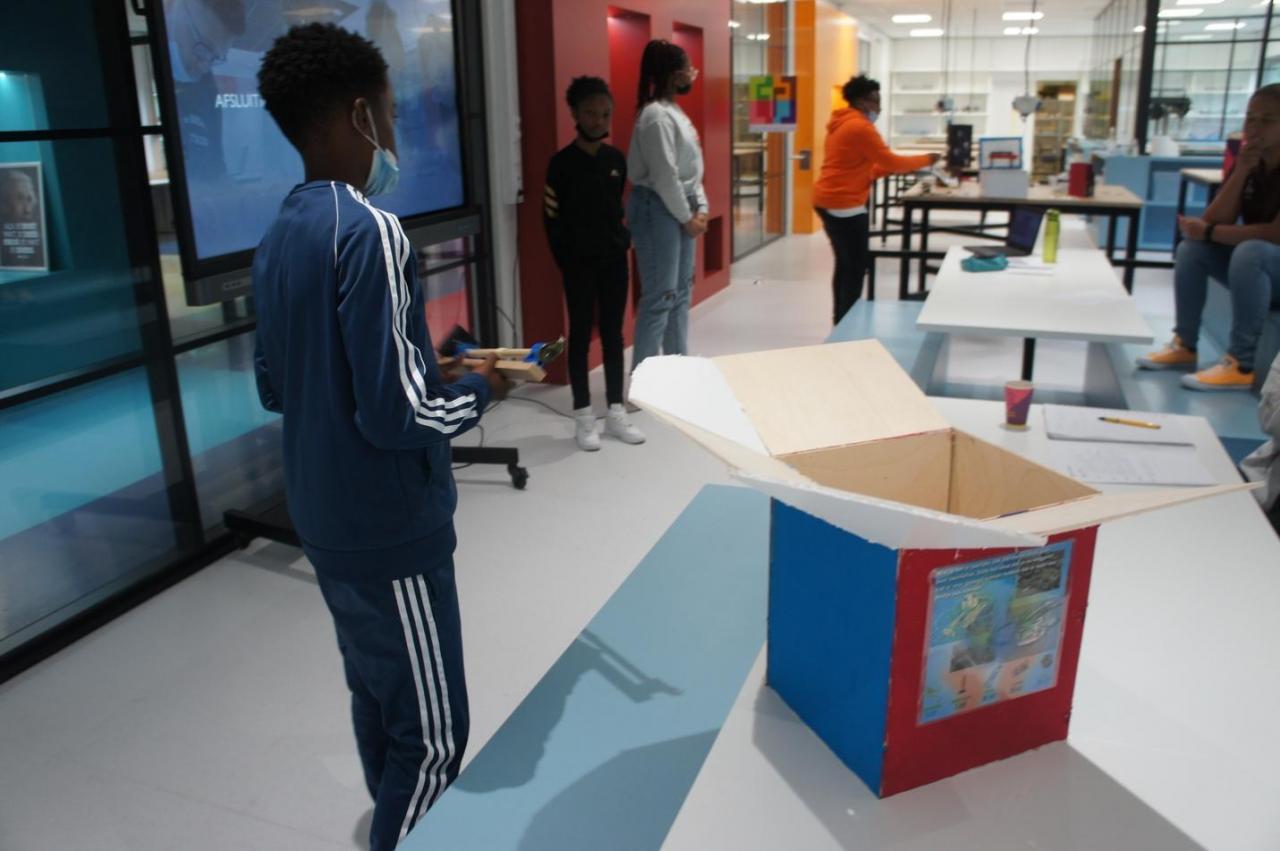Dealing with wasteGenerate creative ideas to rid ourselves of litter

Ready for action?
What
The possible connections with your curriculum
Who
The people who take up the teacher role
Where
The locations where learning takes place
With
The community stakeholders to collaborate with
Short abstract
In this Learning Scenario, students will be introduced to behavioural design. They will research the problem of littering the environment and analyse their research findings. Based on this information, students will then design and build a solution to be tested in the school cafeteria. The design process will include strategies that the students will use to persuade fellow students to throw away waste items in the correct manner. The outcome of the research will then be presented to a relevant audience.
Students visit a place of interest such as a local park or lake or any location where there is lots of litter. The scope of the problem is immediately visible and students meet with the park manager where they are introduced to the project.
Items of waste that are collected during the visit will be placed onto a timeline of plastics. Students will then map out how long it takes the various pieces of plastic waste to decompose.
Students learn about how behaviour can be redesigned and bad habits changed. They will explore this in relation to the bad habit of littering in the context of their school.
Students will learn how to design a successful survey. They will collectively design a survey to provide them with the insights they need to solve their design problem.
The students will talk to people in their community and ask questions regarding littering.
The students will analyse their survey data and make graphs from the results.
Students will use their experiences and knowledge gained so far to develop ideas for an effective and engaging waste collection system for their school.
Students will learn how to work with electronics and in preparation for using them for their waste-collection solution.
Students will apply their electronics skills to develop their design idea into a scale prototype.
Students will test their solutions in the school cafeteria and evaluate their ideas. They will formulate possible improvements for the future.
Students will prepare a presentation for the client explaining the concepts that underpinned their ideas, how this translated into a design, their user testing results and potential future improvements.
Students will give an oral presentation alongside the presentation of their prototype to stakeholders in the community.
Teacher feedback
Aha moments
- LU2: A timeline with the number of years something took to decompose appealed less to the students than a timeline with personal milestones on it, such as when they will graduate or have grandchildren. It made it more personal for them. So instead of 10 years, 20 years, 50 years, 100 years, we used the year 2030, the year 2050, the year 2070, the year 2120.
- LU4b: Where I expected more difficulties, the students were very good at approaching respondents. They were confident to approach them and ask the questions. They also did not find it annoying or difficult to do and returned enthusiastically. They really wanted to gather inside information for the sake of their project.
- LU5: At this stage Aha-moments happen frequently, almost continuously throughout the process. Students often came up with solutions that I had not thought of. By freeing up space for them to explore and scaling back the assignment to a prototype, the students felt liberated from restrictions and came up with great solutions and experiments.
Uh oh moments
- LU4b: The questionnaire turned out to be too long. Respondents were willing to help out but became fed up after three quarters of the questionnaire. Next time we will have to edit more to determine what questions we need and what questions are nice to have in LU4.
- LU4c: The students wanted to start with the assignment right away without reading the instructions; sometimes they would skip the whole explanation. Next lesson, instead of a worksheet, I will possibly introduce video tutorials on how to use excel for data collecting, and let them find out their own information about working in Windows Excel.
- LU5/6: As a teacher, I hadn’t worked with a sketch model before. But the designs on paper were still too vague to really come to a GO or NO GO moment (giving students permission to go ahead with their prototype). The second lesson of designing I introduced the sketch model and it worked very well for the students to explain and elaborate their idea.
General tips
- LU6/7: The intention was to have the students make a full-size waste system. However, this turned out to be far too restrictive in the amount of available material, using electronic components, and in the possible applications. This was really hampering the students’ progress, so I recommend switching to scale prototypes. This does mean that the test phase as it was originally intended has to be adjusted.